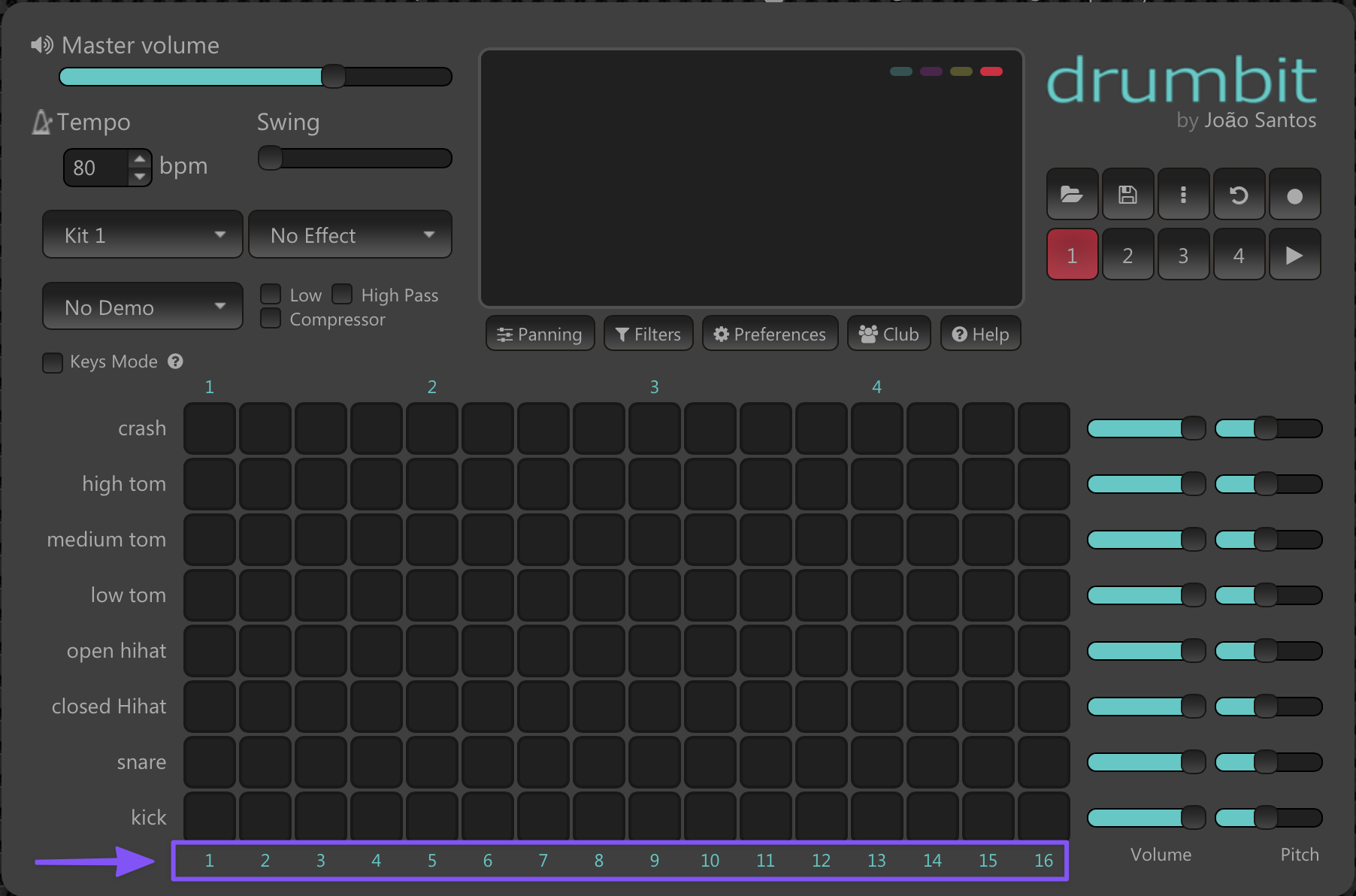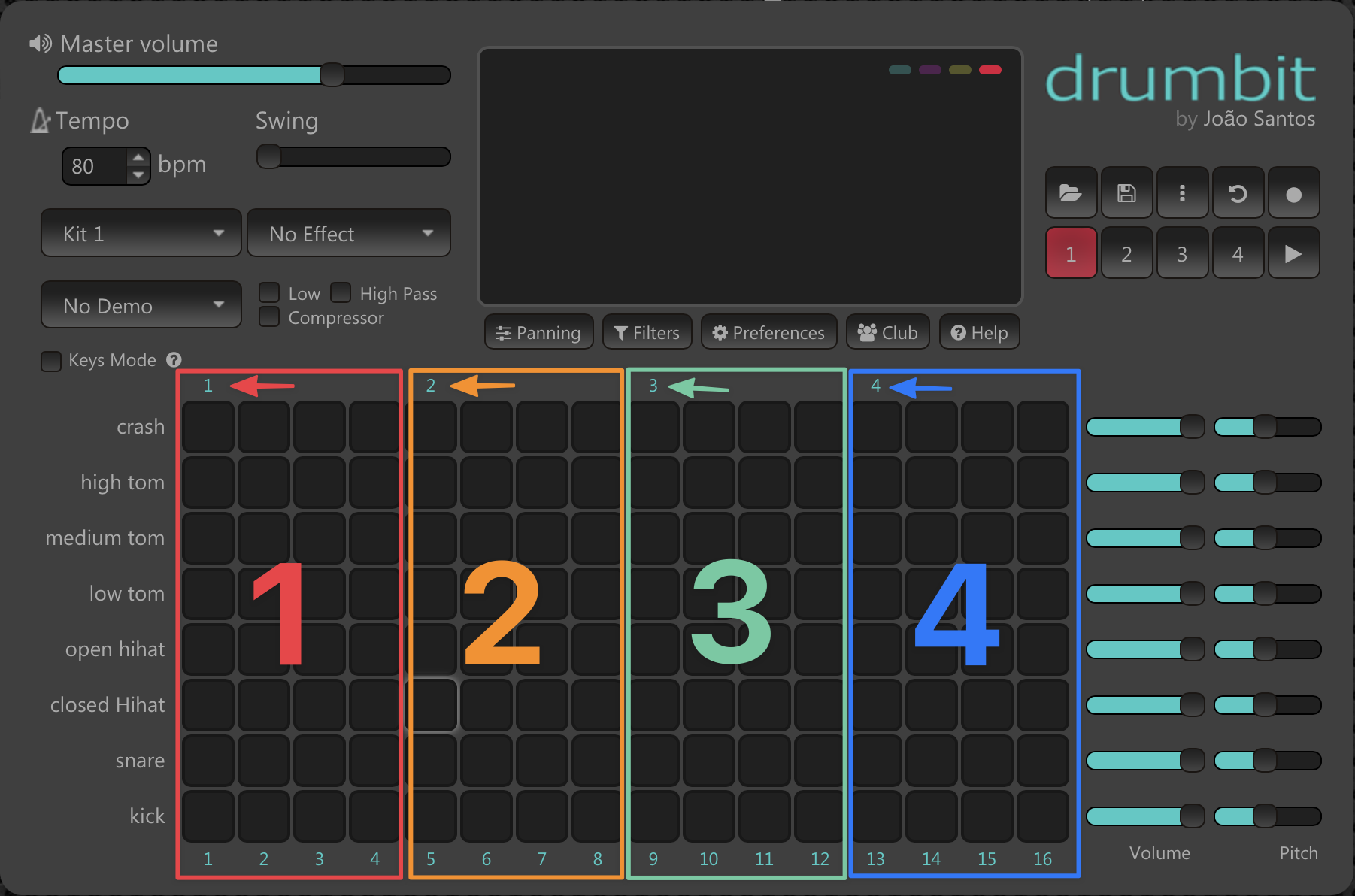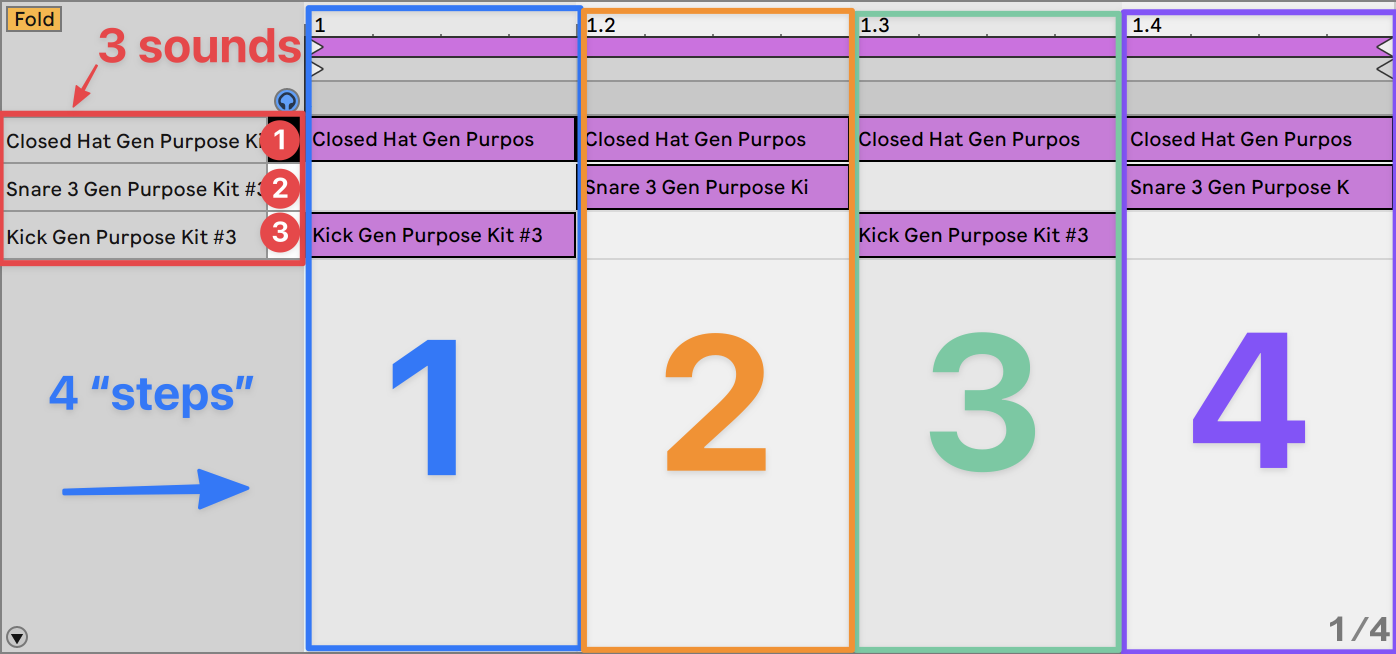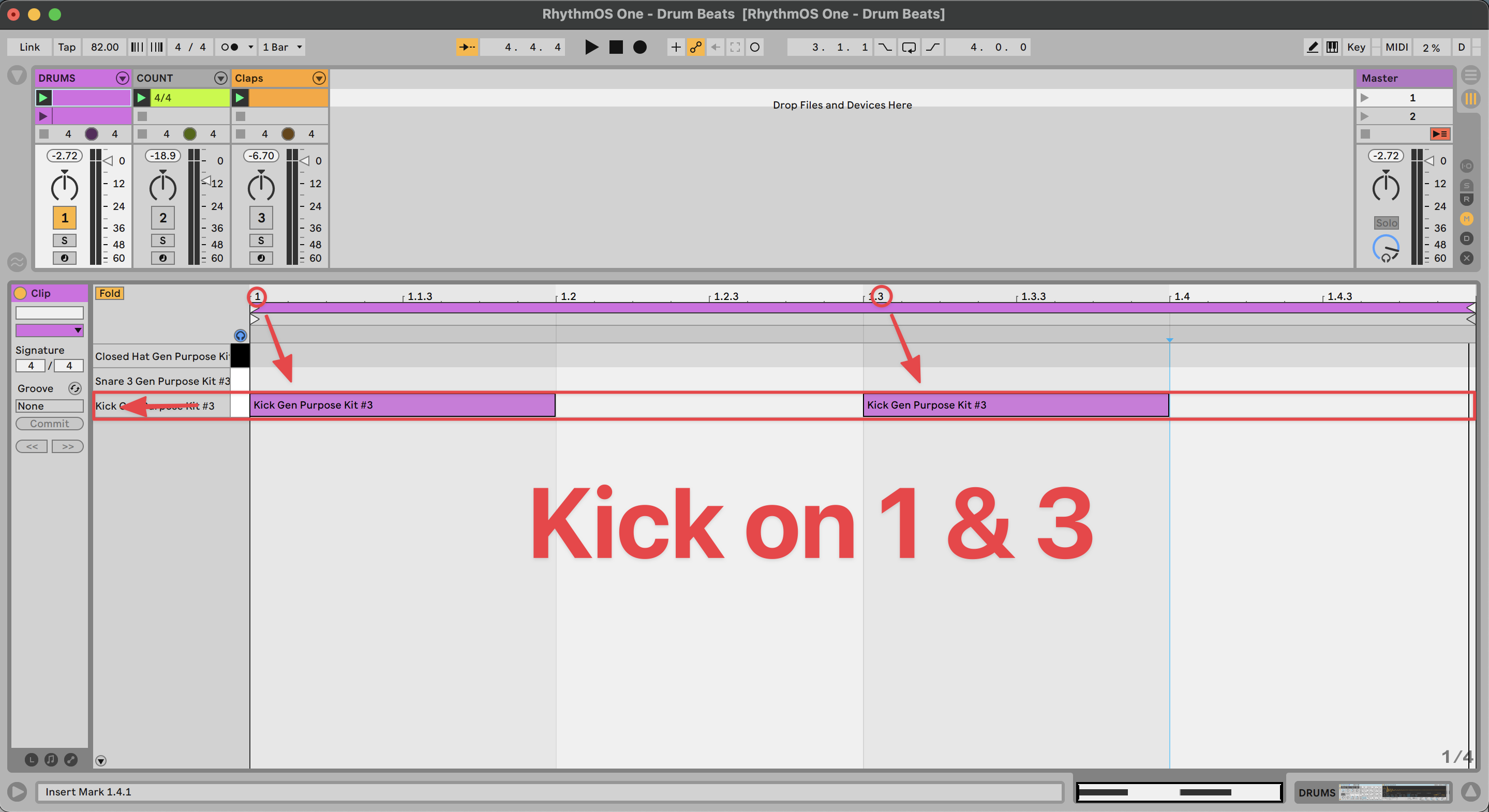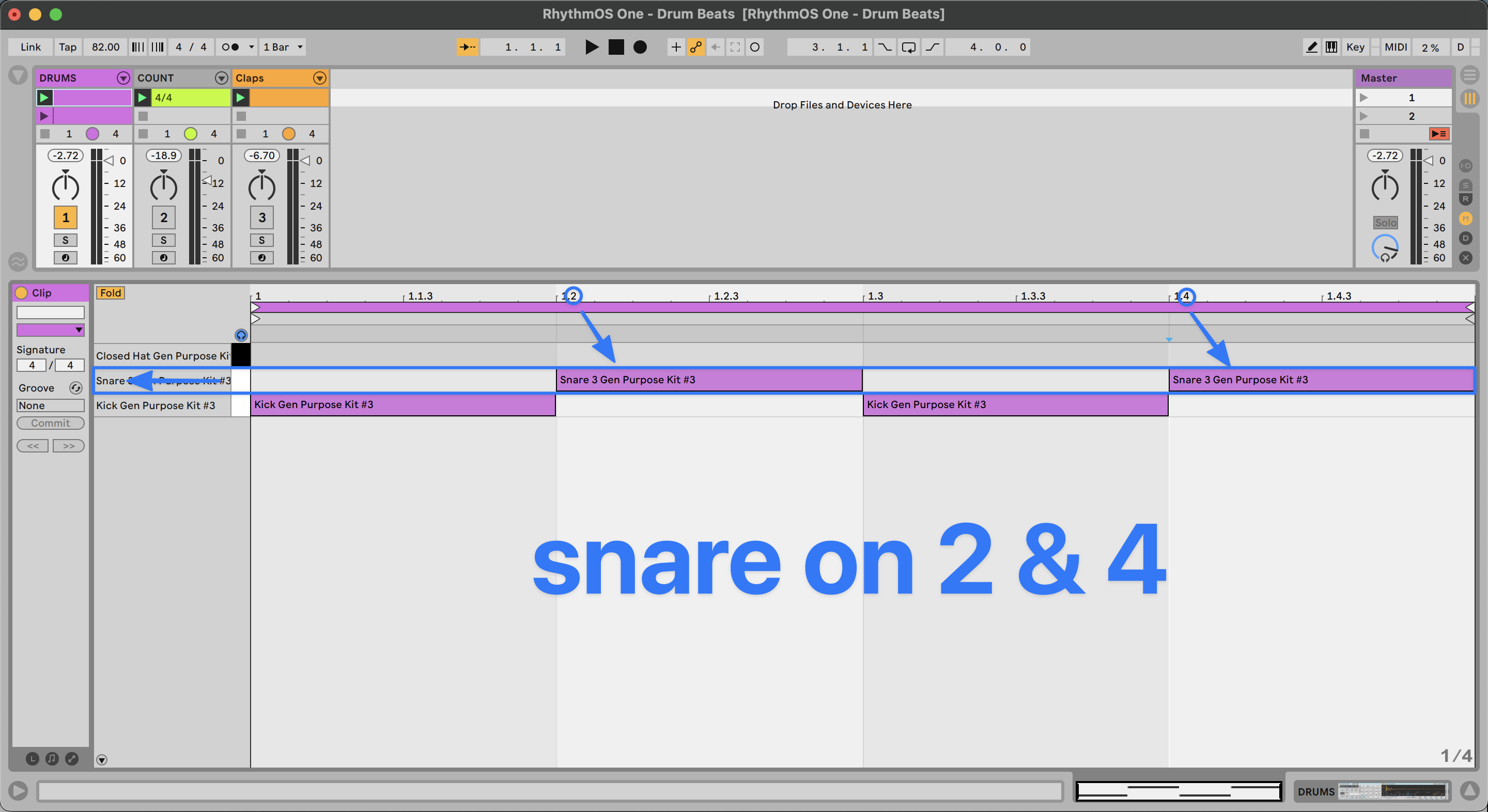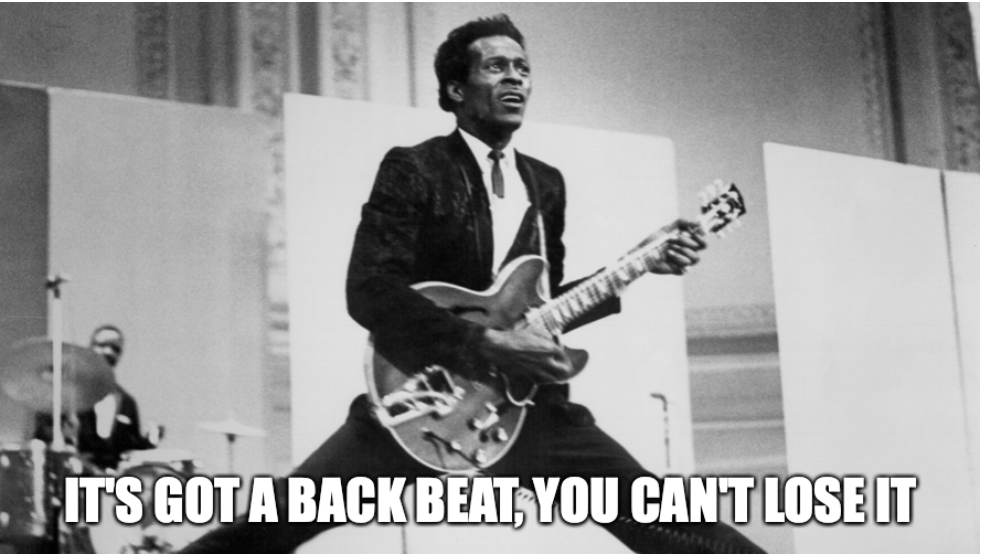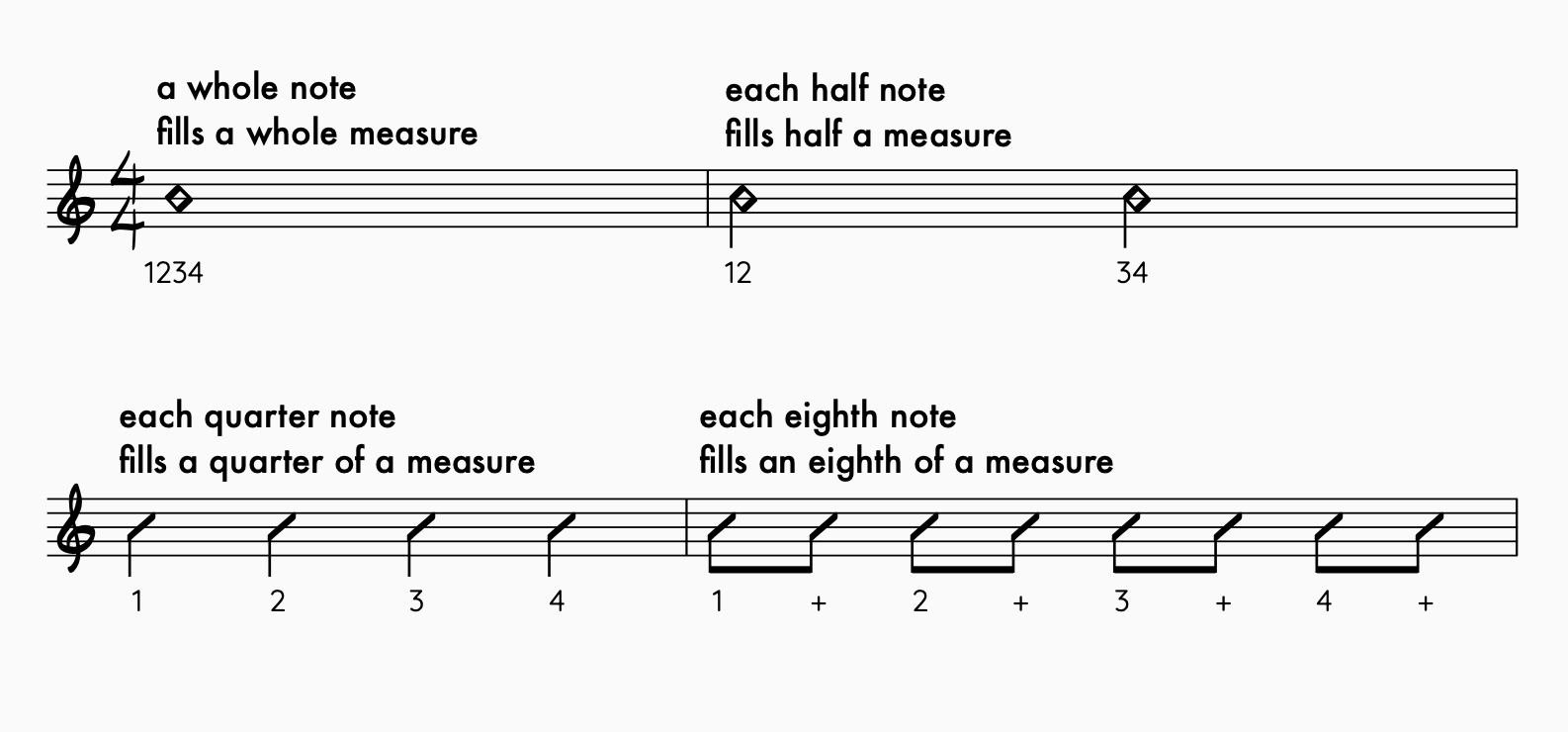RhythmOS 1-1: Thinking Like A Rhythm Section Player
I like TAB…
…but it has its limitations.
The first is that it encourages us to look 👀 instead of to listen 👂.
The unspoken message is that the most important aspect of a note is where to find it on the fretboard instead of what it sounds like.
The second limitation of TAB is that it (usually) doesn’t have any information about WHEN to play the note.
And WHEN you play a note is actually more important than WHAT note you play.
- The right note at the wrong time is still wrong.
- A wrong note played at the right time still works (most of the time).
One of the biggest things I hope to teach you is how to think like a rhythm section player.
(Because hey: guitar is a rhythm section instrument.)
We guitarists have TAB.
Its main job is to show us WHERE to find the notes.
Drummers have their own thing like TAB.
Its main job is to show them WHEN to play the notes.
It’s called a step sequencer.
It’s a grid that’s 16 boxes wide.
Why sixteen?
Most music is based on a recurring pattern of 4.
We count 1234 1234 1234 1234 over and over and over.
If we divide each of those numbered beats into four equal pieces we get 16 (4 x 4 = 16).
We’re going to play with this step sequencer a couple lessons into the future.
But for now, let’s use another tool: Ableton.
It’s waaay more powerful than a simple step sequencer, but I’ve configured it to give us fewer options.
Three sounds:
- hi hat
- snare
- kick
Four “steps” wide (one for each beat):
Let’s listen.
Here’s 1234 on just the kick drum:
There’s a whole lotta disco, techno, & rock with the kick drum on all four beats.
We call that “four on the floor.”
More common, though, is kick on 1 & 3…
…and snare on 2 & 4:
Let’s listen:
The snare on 2 & 4 is called a BACKBEAT.
Contrary to what Chuck Berry says, you CAN lose the backbeat or… just fail to locate it at all.
Snobby musicians like me are forever mocking old white folk who can’t figure out when to clap.
Hand claps go with the snare drum, and the snare drum goes on 2 & 4.
Like this:
We said before that “most music is based on a recurring pattern of 4.”
This pattern is so common, in fact, that we call it “common time.”
And all the names we use to say how long a note is…
…are expressed as fractions of common time.
Each recurrence of 1234 is called a “bar” or a “measure.”
Bleh.
Whole notes. Half notes. “Each eighth note fills an eighth of a measure.”
What a bunch of academic gibberish! What does that even mean?
Even if you know the theoretically proper answer…
It doesn’t matter if you can’t connect it to actual music.
So let’s go to video:
When we talk about the midway point between two numbered beats, we say “and.”
- “one and two and three and four and”
- “there’s a hit on the and of two”
When we write the ands, we use + or sometimes &.
- 1 + 2 + 3 + 4 +
- 1 & 2 & 3 & 4 &
Let’s review:
- TAB is focused on WHERE to find a note
- Step sequencers show us WHEN a note happens
- The kick drum is most often played on beats 1 & 3…
- …and the snare drum is most often played on beats 2 & 4.
- 2 & 4 = “the backbeat”
- If you’re gonna clap along with the music, clap on the backbeat.
- (When in doubt, follow the snare drum)
- Most music is based on a recurring pattern of 4…
- …and this recurring pattern of 4 is so common we call it “common time.”
- Common time gives us the names of our note durations:
- a whole note fills a whole measure of common time
- a half note fills a half a measure of common time
- quarter notes fill a quarter of a measure of common time
- and so on
- But it doesn’t matter if you understand this intellectually…
- …if you can’t also tie it to actual musical sounds.
- If we divide quarter notes in half, we get eighth notes…
- …and we count eighth notes 1 + 2 + 3 + 4 +
- You’ll hear eighth notes most often in the hi hat part.
Your Rhythm IQ is now lightyears ahead of the average guitarist.
But we’re not quite done just yet.
The thing that’ll really make the cartoon lightbulb illuminate over your head is hearing some common variations:
Get in the habit of listening to music this way.
- can you hear the recurring pattern of 4?
- is the snare playing the back beat?
- what is the kick drum playing?
- the hi hats?
- are there other instruments playing clearly defined rhythms?
Having this awareness of rhythm improves our playing.
- When we know what we’re trying to say, we enunciate.
- When we’re uncertain, we mumble.
